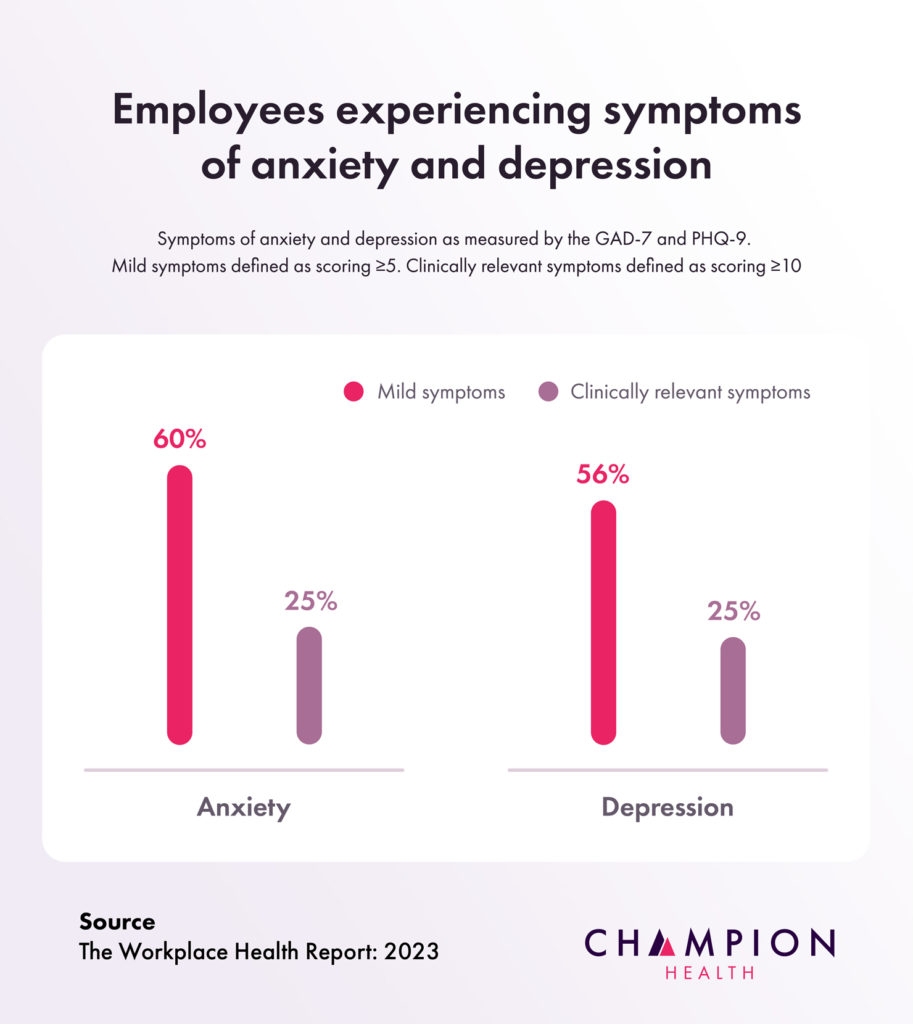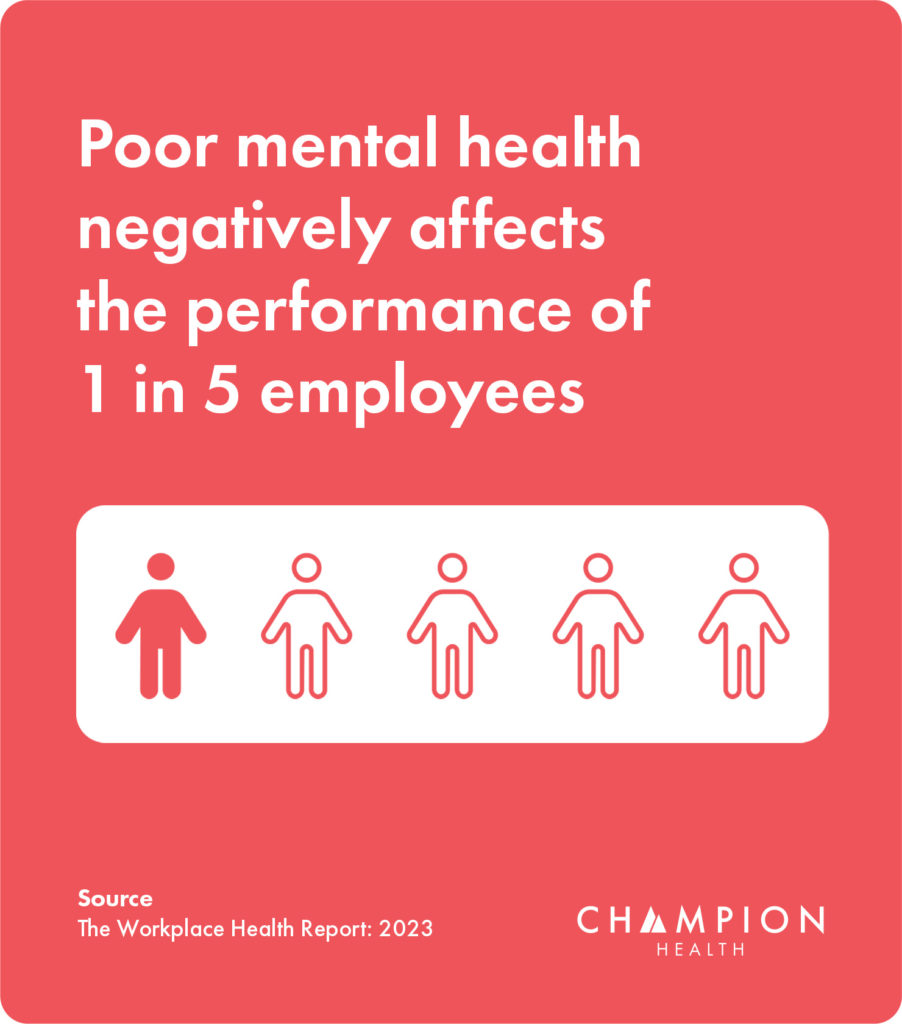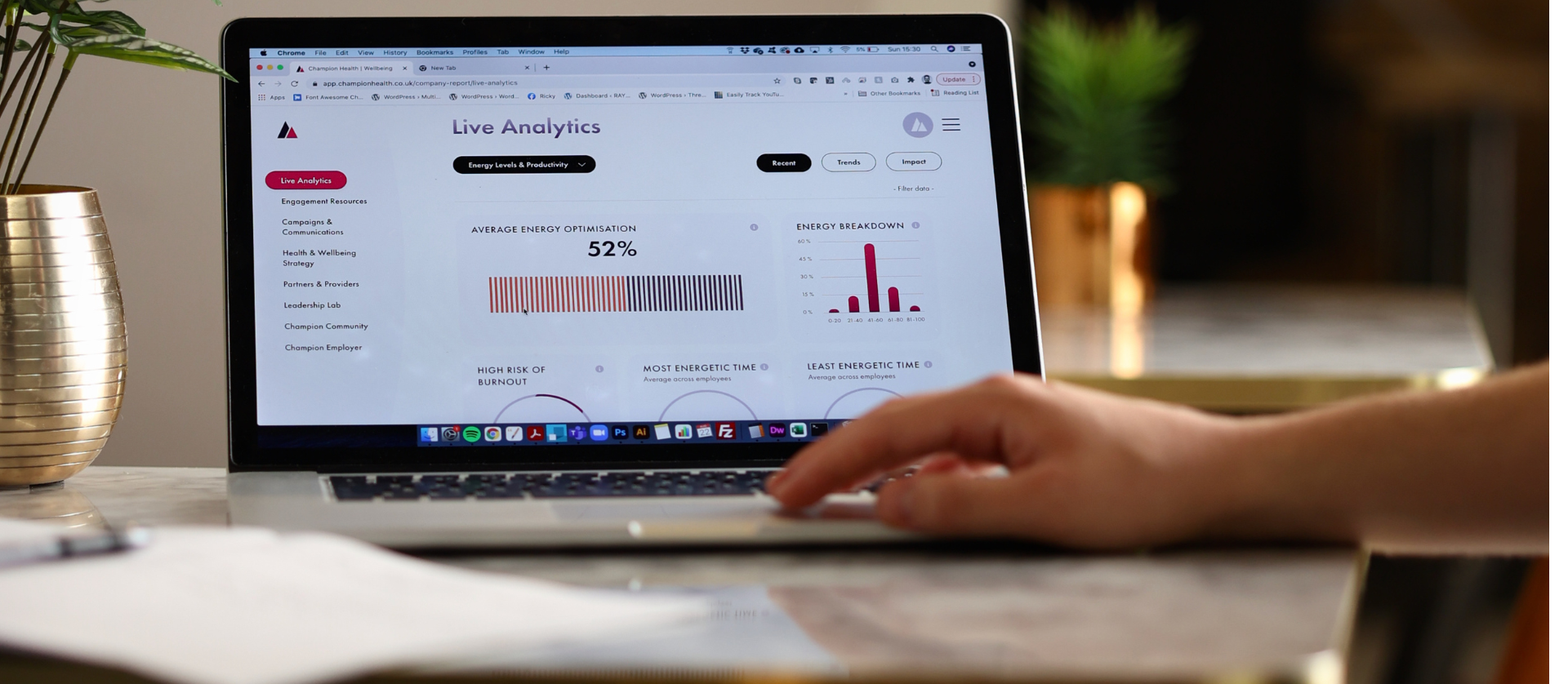Put simply, anxiety in the workplace is common and it’s likely impacting your employees. In fact, our research indicates that a massive 3 in 5 professionals are currently experiencing anxiety at work.
So, in this article, we’re going to explore anxiety in the workplace. Read on to discover your answers to:
- What is workplace anxiety?
- Symptoms of anxiety in the workplace
- How prevalent is anxiety in the workplace?
- The cost to organisations
- How to support employees with anxiety
What is workplace anxiety?
Anxiety is a future-oriented state of mind, characterised by worrying about things that might happen. Workplace anxiety refers to worries about events at work.
Workplace anxiety could involve feeling nervous, apprehensive, tense or stressed about work, or aspects that are related to work.
Workplace anxiety may cause an employee to worry about any number of issues, from job performance, to financial wellbeing, to relationships with co-workers and beyond. If left unaddressed, workplace anxiety can also cause problems for the individual outside of work.
Symptoms of anxiety in the workplace
Learning to recognise the symptoms of anxiety in the workplace will go a long way towards supporting struggling employees.
Anxiety can present itself in many ways and possesses many different physical, social and psychological symptoms, which present differently in each individual person.
Symptoms that you may recognise in the workplace include:
- Disengagement with work
- Increased irritability
- Obvious fatigue and/or lack of energy
- Declining work performance
- Loss of interest in activities they used to enjoy
- Inability to concentrate or focus
For a comprehensive list of anxiety symptoms, access this resource from the NHS.
The key thing to look out for is uncharacteristic behaviour. For instance, if an employee suddenly stops speaking up in meetings, or starts snapping at colleagues – that may be a sign that they are struggling, either with workplace anxiety or something else.
Trust your instinct – if you think something is wrong, it probably is.
How common is anxiety in the workplace?
Every year, the experts at Champion Health reveal the impact of anxiety on UK employees in the Workplace Health Report.
This year, the Champion Health team analysed the anonymous data of over 4,000 employees, across different demographics and sectors.
Our anxiety statistics showed that 60% of employees are experiencing at least mild symptoms of anxiety, with 25% experiencing clinically relevant symptoms.

As the results show, anxiety is incredibly common and there is a need for employees to take specific actions to reduce it.
The cost for organisations
Anxiety poses risks beyond employee wellbeing. If left unchecked, it can result in rising costs to your organisation.
For example, research published by the Health and Safety Executive (HSE) found that stress, anxiety and depression account for more than half of all work-related sickness absence.
Our own research found that workplace anxiety is contributing to levels of presenteeism, with 1 in 5 employees reporting that poor mental wellbeing affects their productivity.

We must also consider the cost of staff turnover: those experiencing anxiety are more likely to leave their job.
Together, the cost of absenteeism, presenteeism and staff turnover due to poor mental health is around £45 billion per year.
How to support employees experiencing anxiety
Here are five practical and actionable steps that you can take to reduce anxiety among your colleagues.
1. Maintain clear, open and regular communication
Hold regular face-to-face conversations with your team members. During these conversations, cover potentially anxiety-inducing subjects like workload, expectations and general work performance.
2. Put your people in control
Lack of control is among the leading causes of employee stress. Reduce this impact by giving your people control and autonomy over how they perform their work.
This can include areas such as their workload, where and when they work and the expectations you have of them.
For example, many organisations are now focusing on employee outputs (the amount of work produced) rather than the time they spend within the office or the number of meetings they attend. This empowers trusted employees to work in a way that suits them, giving them more control and reducing their risk of anxiety.
3. Discover and manage the causes of work-related stress
Workplace stress and anxiety are closely linked. By discovering and managing your employees’ specific work-related stressors, you will work towards reducing their anxiety.
As a starting point, read this article to discover common causes of work-related stress to look out for within your organisation: Top 10 Causes of Stress at Work.
4. Discuss reasonable adjustments you can make
Reasonable adjustments – changes to the workplace or the work practices of an employee that enable them to perform at work – are a key part of any employee support system.
While typically utilised for physical health challenges, reasonable adjustments can also be utilised effectively within mental health.
Where appropriate, work with employees experiencing anxiety, to discover the changes you can make to help them. For more information, read our introduction to reasonable adjustments for mental health.
5. Discover the challenges faced by your workforce
Recognition of the different pressures faced by various demographics, and a commitment to addressing them, is imperative for any employer who wants to reduce anxiety in the workplace.
With that in mind, before you implement anxiety-reduction initiatives, take steps to discover the unique challenges faced by different demographics of your workforce.
Read this article to explore each of these practical steps in more detail: 5 effective ways to reduce employee anxiety.
Anxiety in the workplace: moving forward
Recent events have taken a toll on employee mental health. But as a leader or people manager, you can make a huge difference during these challenging times.
You have the opportunity to support the wellbeing of your teams, right when they need you to. We hope you take that chance.





